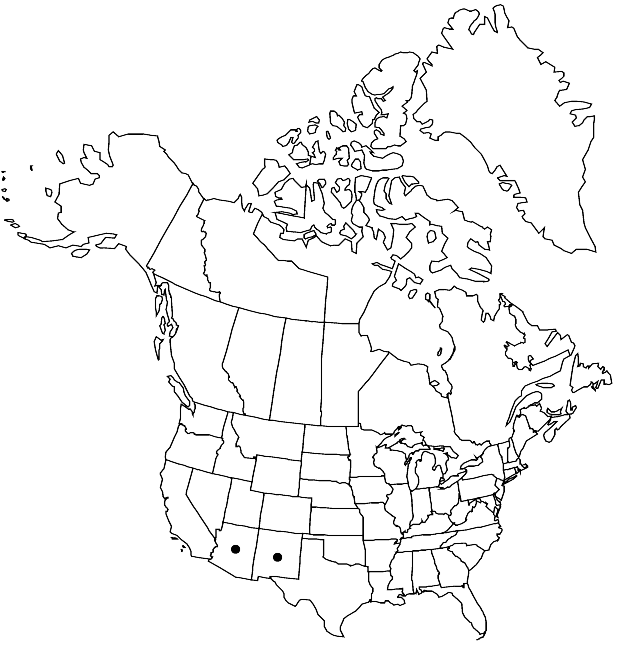Physaria pinetorum
Novon 12: 327. 2002.
Perennials; caudex simple or branched; densely pubescent, trichomes (sessile or short-stalked), 6–8-rayed, rays furcate or bifurcate, (tuberculate, less so on outer layers). Stems simple or few from base, ascending to erect, (0.5–) 1–2 (–3.5) dm. Basal leaves: (petiole tapering to blade); blade rhombic to elliptic and irregularly angular, sometimes spatulate to oblanceolate, 1.5–7.5 (–10) cm, margins entire. Cauline leaves: (not or loosely overlapping, petiolate or distal sessile); blade spatulate to oblanceolate, 1–4 cm, margins entire. Racemes crowded, elongated. Fruiting pedicels (ascending, curved or sigmoid), 6–12 (–20) mm. Flowers: sepals ovate, oblong, or elliptic 4–7.5 mm, (median pair thickened apically, cucullate); petals spatulate or broadly cuneate, 6–13 mm, (claw slightly expanded at base). Fruits (substipitate), globose or obovoid to ellipsoid, sometimes slightly obcompressed, 4–9 mm; valves (not retaining seeds after dehiscence), glabrous throughout; replum as wide as or wider than fruit; ovules 4–24 per ovary; style (2–) 4–7 mm. Seeds flattened. 2n = 10.
Phenology: Flowering Apr–Jul.
Habitat: Scrub oak, pinyon-juniper woodland, open ponderosa pine forests, these sometimes mixed with Douglas fir, white pine, white fir, Engelmann spruce, or Gambel oak, on limestone-derived or otherwise basic soils, often in rock crevices
Elevation: 1400-2900 (-3400) m
Discussion
Physaria pinetorum with reduced forms are found at high elevations; in disturbed, moist soils plants can become quite large, as in the Manzano Mountains. Densely cespitose plants with crowded racemes not exceeding the basal leaves are found at the crest (3200–3400 m) of the Sandia Mountains, New Mexico. These probably represent an undescribed taxon.
Selected References
None.
Lower Taxa
"elongated" is not a number."thick" is not a number."dm" is not declared as a valid unit of measurement for this property."dm" is not declared as a valid unit of measurement for this property.
